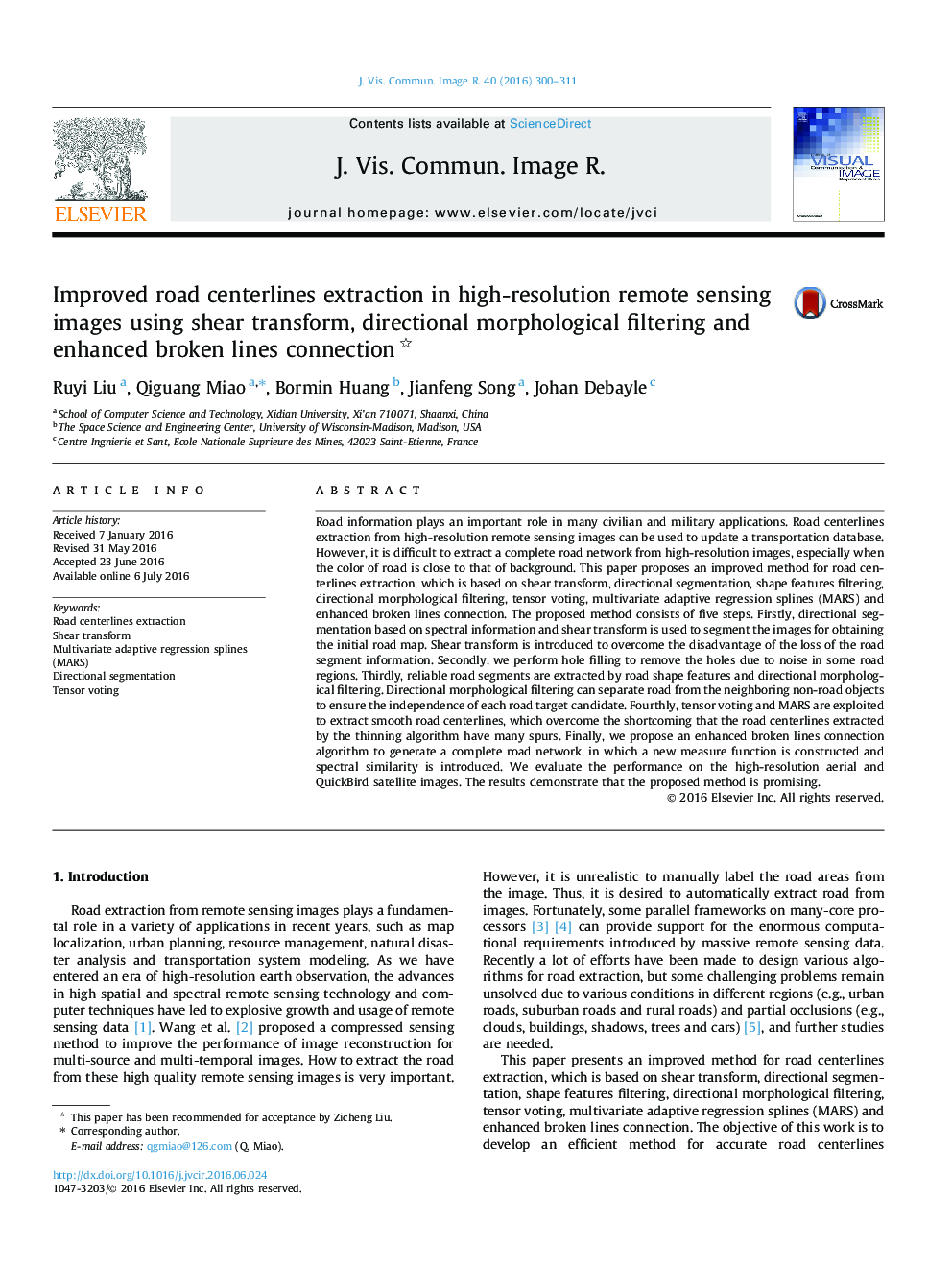| Article ID | Journal | Published Year | Pages | File Type |
|---|---|---|---|---|
| 528511 | Journal of Visual Communication and Image Representation | 2016 | 12 Pages |
•We apply spectral information and shear transform in directional segmentation.•Directional morphological filtering is adopted to ensure the independence of road.•We propose an enhanced broken lines connection algorithm.
Road information plays an important role in many civilian and military applications. Road centerlines extraction from high-resolution remote sensing images can be used to update a transportation database. However, it is difficult to extract a complete road network from high-resolution images, especially when the color of road is close to that of background. This paper proposes an improved method for road centerlines extraction, which is based on shear transform, directional segmentation, shape features filtering, directional morphological filtering, tensor voting, multivariate adaptive regression splines (MARS) and enhanced broken lines connection. The proposed method consists of five steps. Firstly, directional segmentation based on spectral information and shear transform is used to segment the images for obtaining the initial road map. Shear transform is introduced to overcome the disadvantage of the loss of the road segment information. Secondly, we perform hole filling to remove the holes due to noise in some road regions. Thirdly, reliable road segments are extracted by road shape features and directional morphological filtering. Directional morphological filtering can separate road from the neighboring non-road objects to ensure the independence of each road target candidate. Fourthly, tensor voting and MARS are exploited to extract smooth road centerlines, which overcome the shortcoming that the road centerlines extracted by the thinning algorithm have many spurs. Finally, we propose an enhanced broken lines connection algorithm to generate a complete road network, in which a new measure function is constructed and spectral similarity is introduced. We evaluate the performance on the high-resolution aerial and QuickBird satellite images. The results demonstrate that the proposed method is promising.
Graphical abstractRoad information plays an important role in many civilian and military applications. This paper proposes an improved method for road centerlines extraction, which is based on shear transform, directional segmentation, shape features filtering, directional morphological filtering, tensor voting, multivariate adaptive regression splines (MARS) and enhanced broken lines connection. The proposed method consists of five steps. Firstly, directional segmentation based on spectral information and shear transform is used to segment the images for obtaining the initial road map. Shear transform is introduced to overcome the disadvantage of the loss of the road segment information. Secondly, we perform hole filling to remove the holes due to noise in some road regions. Thirdly, reliable road segments are extracted by road shape features and directional morphological filtering. Directional morphological filtering can separate road from the neighboring non-road objects to ensure the independence of each road target candidate. Fourthly, tensor voting and MARS are exploited to extract smooth road centerlines, which overcome the shortcoming that the road centerlines extracted by the thinning algorithm have many spurs. Finally, we propose an enhanced broken lines connection algorithm to generate a complete road network, in which a new measure function is constructed and spectral similarity is introduced.Figure optionsDownload full-size imageDownload high-quality image (120 K)Download as PowerPoint slide
